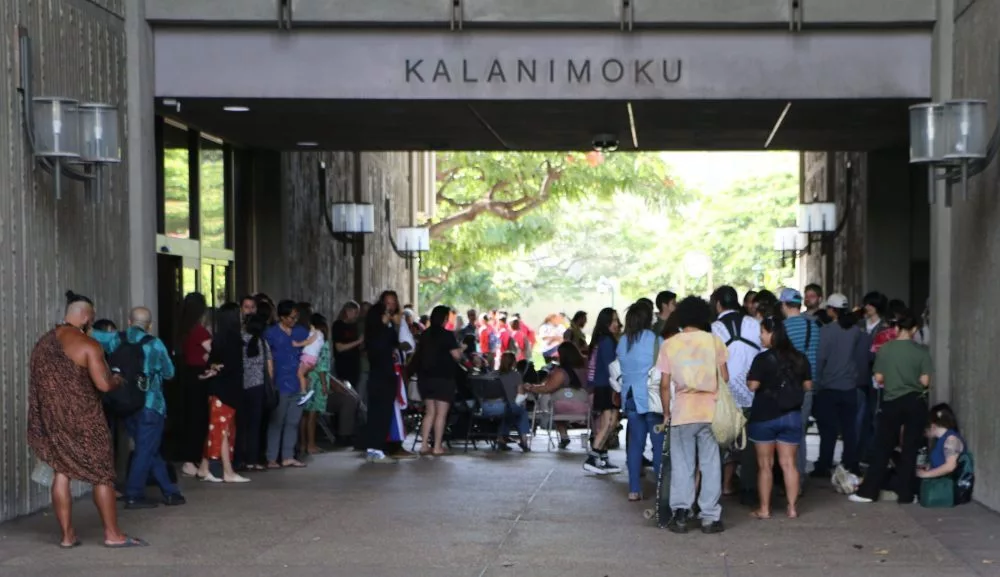After hearing hours of testimony from community members, the Board of Land and Natural Resources (BLNR) voted not to accept the United States Army’s Final Environmental Impact Statement (FEIS) for the proposed retention of state-owned lands at Pōhakuloa Training Area (PTA).
The Land Division, on behalf of multiple DLNR divisions, presented concerns about the FEIS, many of which have been consistent throughout the EIS process. Several of the concerns related to the inventory of archaeological sites being incomplete, a lack of data and analysis regarding endangered biological resources, and inadequate consultation for the cultural impact assessment. While Land Division staff acknowledged that the BLNR will ultimately determine whether the FEIS satisfactorily meets the criteria for acceptance they recommended that the BLNR consider all testimony and comments.
The State Historic Preservation Division (SHPD) acknowledged, as did voluminous testimony from the community, the presence of historic and cultural properties, including ʻiwi kupuna, within the live-fire impact area – federal land that can only be accessed via state-owned property. The EIS did not include potential repercussions to these resources as a result of the retention of the state-owned lands.
The Army has acknowledged that ceasing use of state land would end live-fire activity at PTA. SHPD also requested archaelogical surveys of PTA and concluded that the Army had not performed its due diligence, leaving the potential impact to cultural and archaeological sites unknown.
Staff presented addional concerns regarding Army consultation on the Cultural Impact Assessment (CIA). Staff noted that no apparent effort was made to consult with the Aha Moku council, a step which had been recommended numerous times by DLNR Chair Dawn Chang. SHPD similarly found the CIA to be insufficient and had urged the Army to individually interview a larger number of people with cultural connections to PTA.
The DLNR Office of Conservation and Coastal Lands (OCCL) also noted that the military use is not consistent with the allowable uses in a Conservation District. In the EIS, the Army did not suggest any alternatives such as moving PTA out of the Conservation District into a more appropriate district designation.
An EIS is intended to support informed decision-making and does not, by itself, authorize any land use. No decision has been made on the Army’s long-term lease request. A separate review and determination will be required should such a request be brought before the board in the future.
The Army’s current lease for 23,000 acres of state-owned land at PTA is set to expire in 2029.
DLNR Photo





